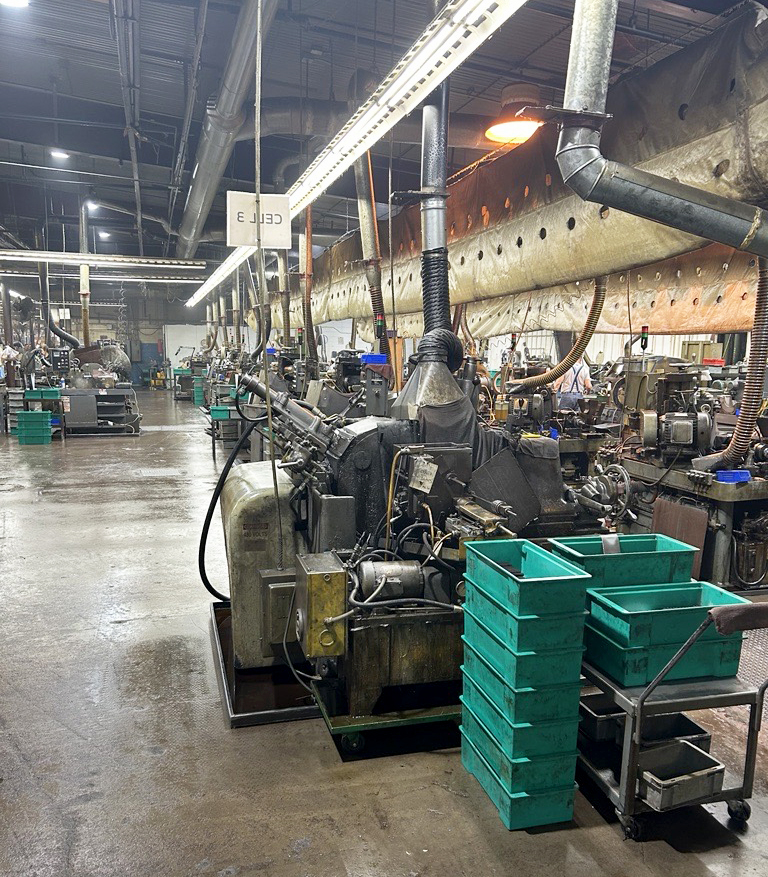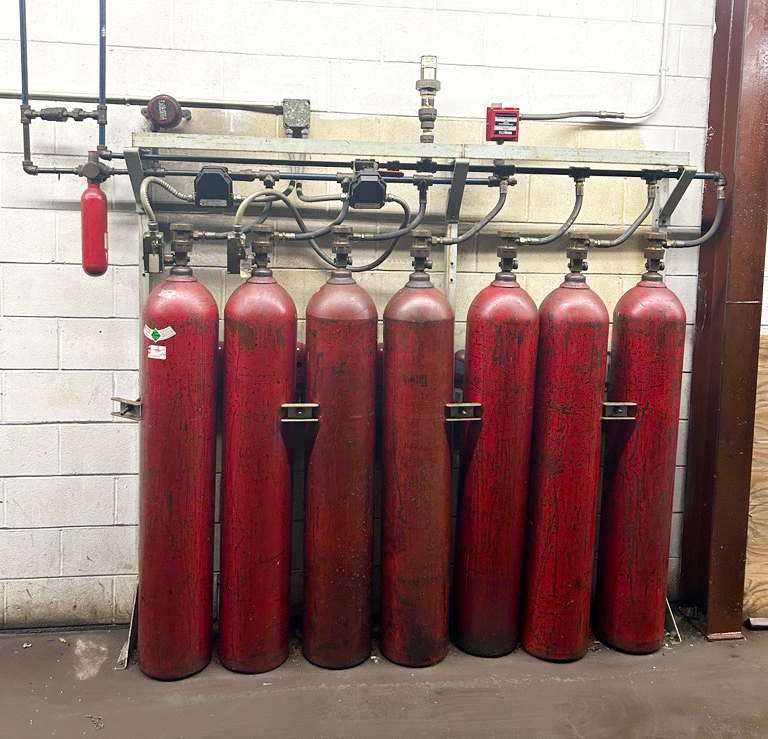
A pre-engineered fire suppression system installed and maintained by LVC Companies’ Hibbing office recently extinguished a blaze in the Minnesota Twist Drill factory in Chisolm.
Minnesota Twist Drill, one of the United States’ leading drill bit manufacturers, has proudly produced high-quality cutting tools on the Iron Range for over 50 years. The 66,000-square-foot facility features 18 production “cells,” each capable of producing up to 10,000 drill bits daily.
Transforming raw materials such as soft-coiled steel and hardened steel blanks into finished drill bits includes numerous steps, and the plant employs over 80 people to make it happen. The manufacturing process includes cutting, coning, heat-treating in a barium salt bath, roto-finishing, a tempering furnace, rounding, fluting, clearing, pointing, split-pointing, reducing, and flatting.
Late this summer, a fire ignited in the production area’s venting ductwork when a spark from one of the machines was drawn into the ducts.
“At this point, the fate of Minnesota Twist Drill hung in the balance,” says Corey Kangas, LVC Portables and Pre-Engineered Systems Manager, who also oversees the Hibbing hub. “If that fire had spread into the filter banks of the factory’s air filtration system, the entire facility could have been destroyed.”

Thankfully, LVC’s Detect-A-Fire (DAF) sensors were standing guard within those ducts, monitoring the air temperature for signs of danger. “DAF sensors are the ‘heart’ of many fire protection systems,” Kangas explains. “These reliable devices have been a standard for over 65 years and control the release of clean agents, CO2, water, or dry chemical fire suppressants.
“DAF sensors are rate-compensated for faster response, offering a unique advantage over both fixed temperature and rate-of-rise types of detectors,” Kangas continues. “At precisely the pre-determined danger point, the system activates immediately.”
When the sensors at Minnesota Twist Drill detected hazardous conditions in the ducts, LVC delivered a one-two punch that stopped the fire in its tracks. “A Kidde-engineered carbon dioxide (CO2) system we designed and installed flooded the ducts and filter bank with 400 pounds of CO2 gas to knock the fire down,” Kangas reports. “An extended discharge of 300 additional pounds of CO2 flooded the ductwork to finish it off.”

CO2 is an effective fire suppressor due to its capacity to quickly eliminate oxygen, which is critical to combustion. As a bonus, CO2 requires no cleanup.
LVC deploys CO2 systems in a variety of settings where minimizing fire damage and ensuring operation continuity are of utmost importance. Such applications range from factories to electrical vaults and generator storage facilities. Since high concentrations of CO2 are hazardous to humans, it is typically used within non-occupied, closed environments (such as the ductwork and filtration system at Minnesota Twist Drill).
CO2 is just one of LVC’s many proven fire protection solutions for safeguarding lives, assets, and revenue.
Contact LVC today to learn more about our fire suppression systems, including special hazard strategies. LVC also installs and services a full suite of security, fire and life safety, structured cabling, and emergency communications systems.

